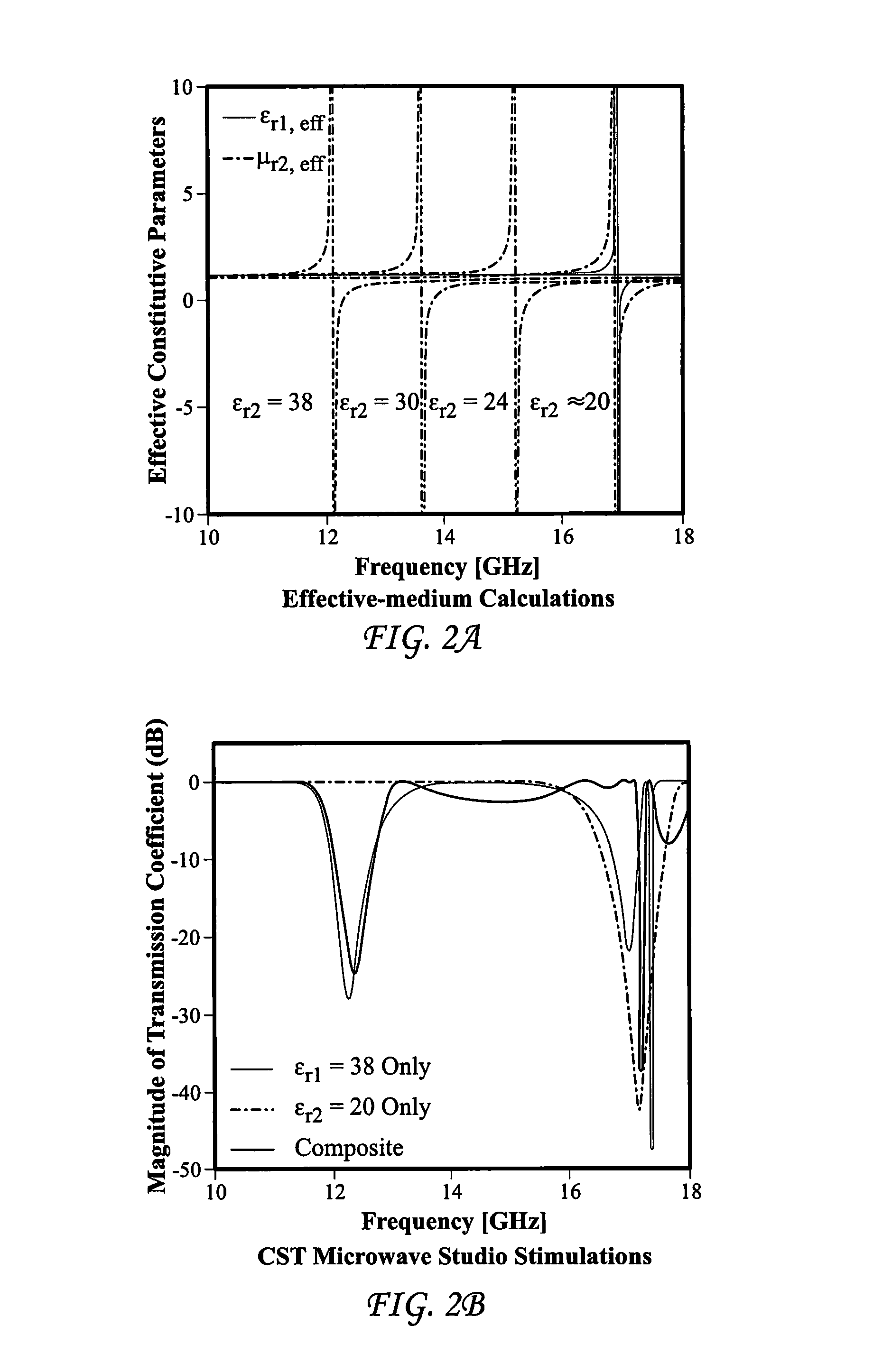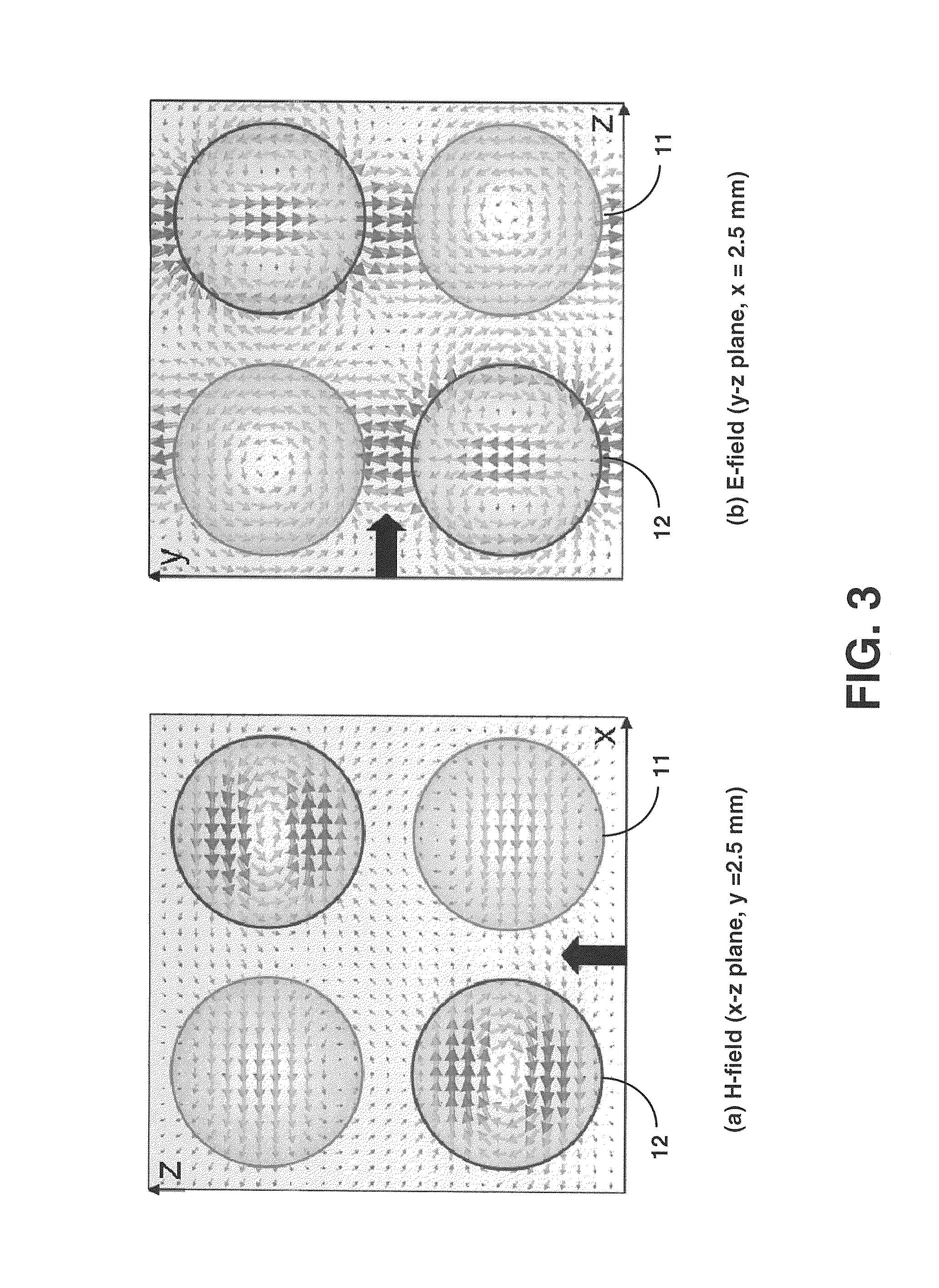Resonant dielectric metamaterials
a dielectric metamaterial and dielectric field technology, applied in the direction of electrical apparatus, anti-nassa, etc., can solve the problems of low-loss isotropic materials with scalar negative permittivity and permeability (or negative index of refraction) that are straightforward to analyze, and are rather difficult to realize. , to achieve the effect of negative permittivity and permeability
- Summary
- Abstract
- Description
- Claims
- Application Information
AI Technical Summary
Benefits of technology
Problems solved by technology
Method used
Image
Examples
Embodiment Construction
[0019]A key aspect of metamaterials is that the characteristic structural length scale is small compared to the operating wavelength so that the electromagnetic properties of the metamaterial can be described in terms of effective electric permittivity (∈) and magnetic permeability (μ). However, since these quantities arise due to artificial structuring it is possible to achieve properties unlike those found in naturally-occurring materials. To date, most metamaterials have been fabricated using metallic unit cell structures in dielectric media. The unit cell structures are designed to exhibit resonances with the electromagnetic field at predetermined frequencies. The resonances can be electric or magnetic in nature, but in either case a strong dispersion of the optical constants (∈(ω), μ(ω), and the refractive index n(ω)=√{square root over (∈(ω)μ(ω)))}{square root over (∈(ω)μ(ω)))} occur in the vicinity of resonances. This enables the metamaterial designer to “dial in” the optimal ...
PUM
 Login to View More
Login to View More Abstract
Description
Claims
Application Information
 Login to View More
Login to View More - R&D
- Intellectual Property
- Life Sciences
- Materials
- Tech Scout
- Unparalleled Data Quality
- Higher Quality Content
- 60% Fewer Hallucinations
Browse by: Latest US Patents, China's latest patents, Technical Efficacy Thesaurus, Application Domain, Technology Topic, Popular Technical Reports.
© 2025 PatSnap. All rights reserved.Legal|Privacy policy|Modern Slavery Act Transparency Statement|Sitemap|About US| Contact US: help@patsnap.com



